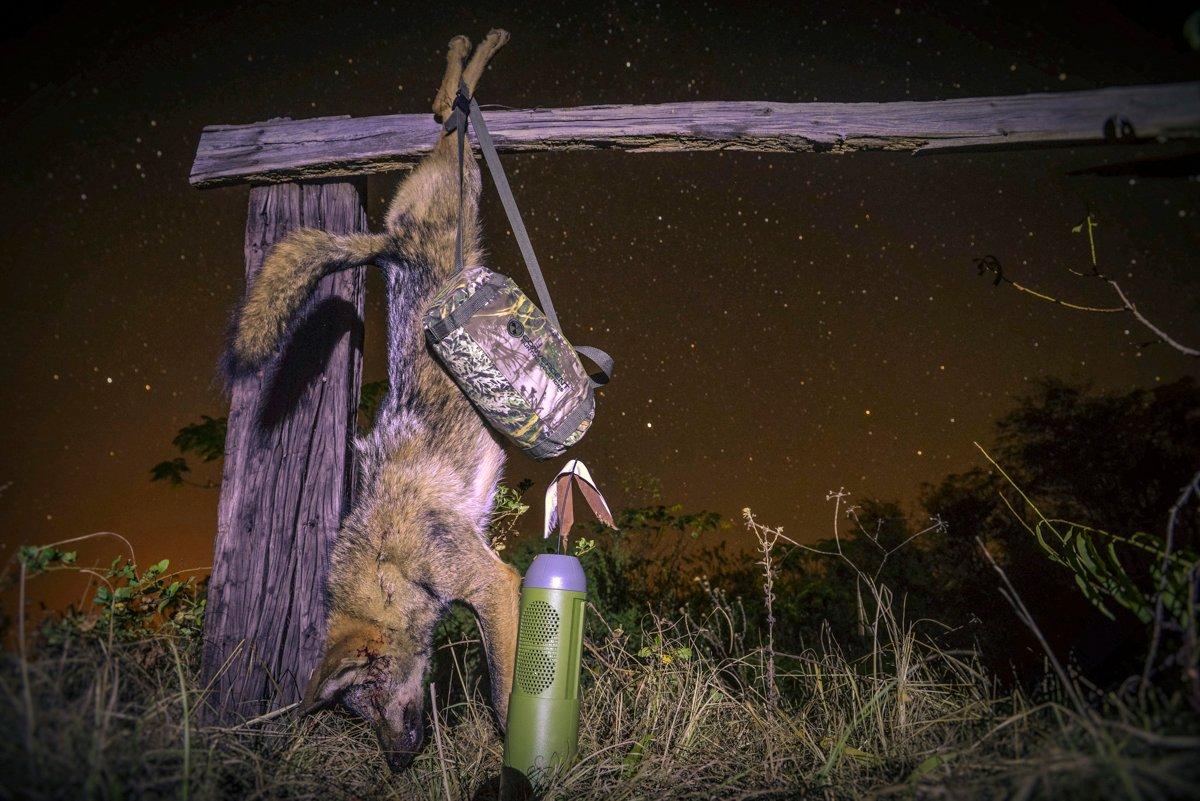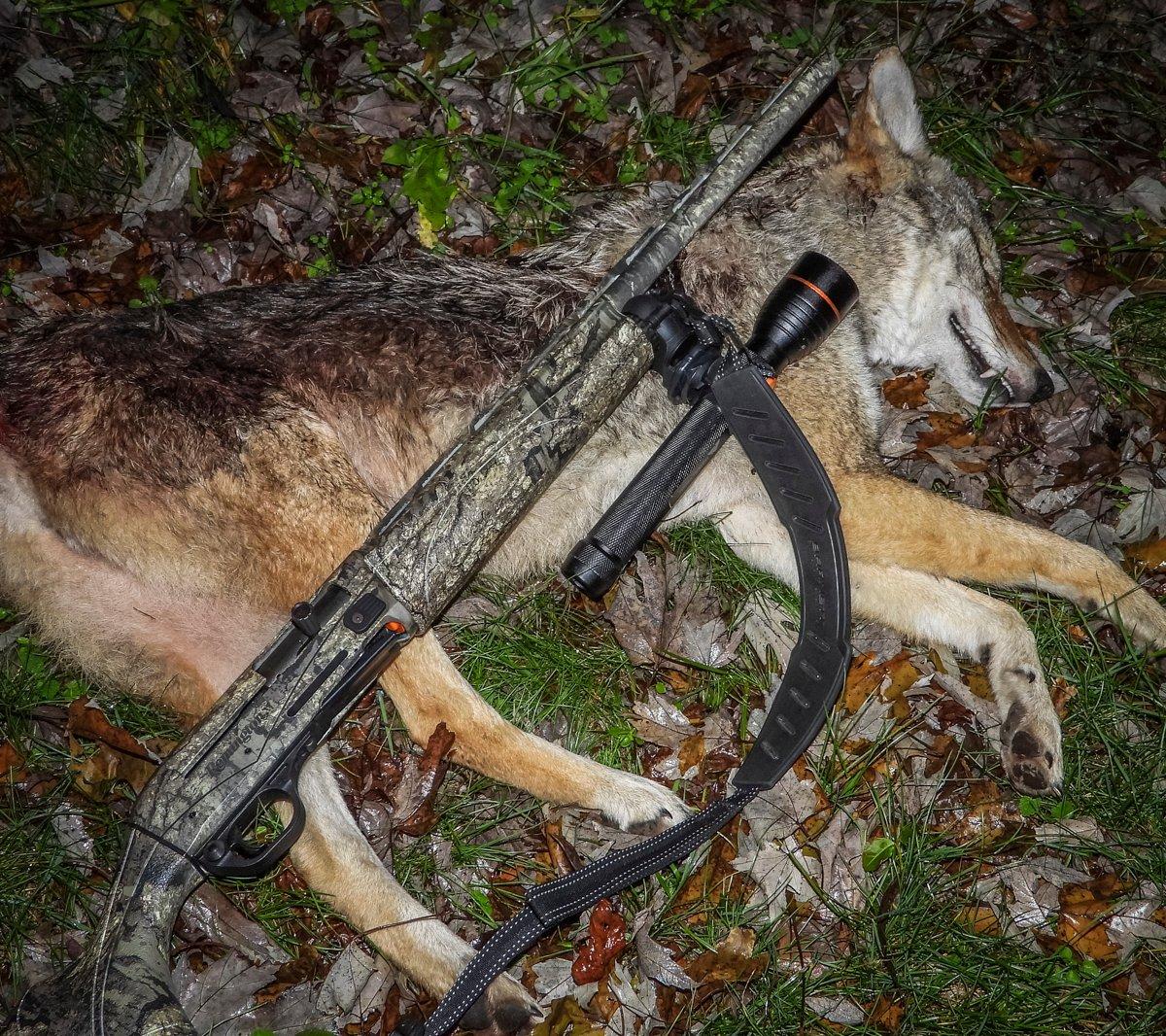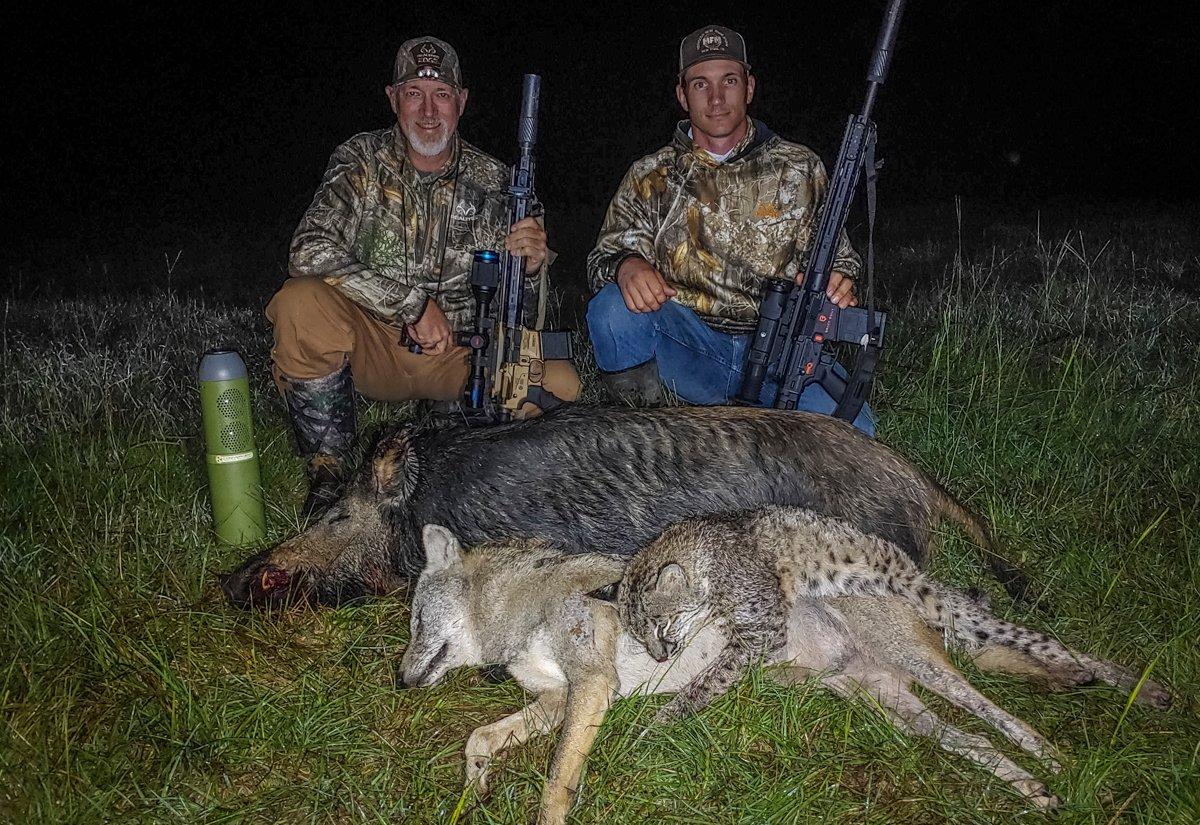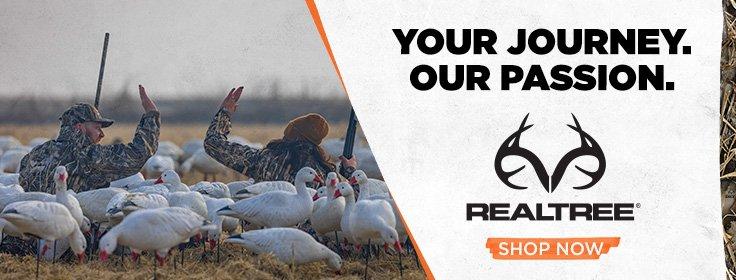Ditch the daylight for consistent coyote hunting action
Hunting at night can be one of the most effective ways to take coyotes. Like most predators, they tend to be more active after dark, so chances are good that they'll be up and searching for food while you're calling to them. Hiding under the cover of darkness makes it much easier to trick a predator's keen eyesight, too.
So what's stopping you from predator hunting at night? In a lot of places, it's illegal. But the good news is, more and more states are passing new and expanding existing night hunting regulations. Kentucky opened night hunting a couple years ago, and a bill currently working through the Pennsylvania House would allow hunting with night vision and thermal scopes for part of the year. Since regulations are changing fast, it's important to do some research so that you know your state's exact law before you go.
Play It Safe
Coyotes and other predators tend to see a lot better than we can once the sun goes down. So if you're going to hunt at night, keep these safety precautions in mind.
Start by hunting areas you know. I prefer to have a good feel for how a hunting spot looks in the daylight before I attempt to hunt it at night. Is there a house just over that ridge? What about a barn without electricity and lights? Livestock in the area? Are there roads? Is there a good backstop for a centerfire bullet? Ask yourself these questions before you go, and don't hunt if you aren't confident in your answers.
Use the Right Equipment
Predator hunting at night falls into three categories. Some states don't allow night vision or artificial lighting at all, forcing night hunters to rely on moonlight. Other states allow lights, but not thermal vision or scopes, and some allow the use of both lights and thermal technology.
Thermal scopes are nice, but they're also expensive. Good thermal units can run anywhere from several hundred dollars to several thousand. Luckily, you don't have to have expensive thermal gear for nighttime predators.
If your state allows, a few good lights are all you need. I like a super bright, handheld spotlight for sweeping fields, a gun-mounted light with a pressure switch and adjustable brightness, and a head-mounted light for those occasions when I need hands-free lighting.
While some predator hunters swear by red or green filters to cover their lights, Realtree pro and predator expert Byron South says white light is fine. What's more important than color is your ability to dim the light.
I'll get to a spot and give the field a sweep with a bright light to make sure it's safe to shoot, then I'll turn off the bright light and start to call, he says. I'll turn down my light and shine the field with a dim light. I don't think the dim light seems to bother predators. When I pick up a set of eyes, I'll turn up the brightness. It's kind of like frog gigging; the light almost seems to mesmerize them and they come straight in. In areas where it's legal to hunt from a platform in the back of a truck, I've called both coyotes and cats right up to the side of the truck with this method.
Call 'Em Up
Calling predators at night is similar to calling during daylight hours. South likes to start with rabbit in distress before moving on to more aggressive calls like howls, barks and pup distress calls. Hunters can use mouth calls like the Zepp's Rattler and 1080 models. Mouth-blown calls are lightweight, can be used anywhere, and don't require batteries or charging, but they also require some practice to master. Where legal, electronic calls require much less skill and can offer a wider range of sounds, from various prey sounds through all coyote vocalizations.
"When I pick up a set of eyes, I'll turn up the brightness. It's kind of like frog gigging; the light almost seems to mesmerize them and they come straight in."
— Byron South
Great choices for e-callers include the Primos Turbo Dogg, packed with 36 sounds and four pre-programmed hunt series that will run through various calls in the correct order. If you are looking for a combination motion decoy and call, check out the Primos Alfa Dogg Decoy Combo. Along with 75 sounds, six pre-programmed hunt series and a 200-yard range, the Alfa Dogg Combo also features the Primos Sit-n-Spin rotating decoy. Both Primos calls are available in Realtree Max-1 Camo to conceal them from even the sharpest-eyed predators.
Other good choices for calls include the Convergent Hunting Solutions Bullet HP and Sidewinder. Both calls offer endless, completely customizable combinations of sounds transmitted from an app on your phone through Bluetooth. With ranges of up to 300 feet, the Bullet HP allows you to place the caller well away from your location, keeping your quarry concentrated on it instead of you. The call includes a moving decoy, which is also controllable through the app.
Choose Your Weapon
This is also dependent on the state where you're hunting. Some states limit night hunting to shotguns only, other states permit shotguns and rimfire, and others still allow centerfire calibers. Hunters in rimfire-only states should take a serious look at the .17 Winchester Super Magnum. Pushing a 25-grain bullet at 2,600 fps., this little round has more than enough power for even large coyotes.
For centerfire legal states, choose something in the .223 to .243 range for quick kills and minimal damage to the fur. Realtree pro and predator expert Mark Zepp recommends using a rifle you're familiar with when predator hunting. Being able to make an accurate shot in a hurry is more important than action or caliber, he says.
One of the best choices for nighttime hunts is a shotgun. They're legal in every state that allows night hunting, and their shorter range makes them the perfect choice when hunting populated areas or near livestock. Set up your semi-auto with a modified choke and pick up a few boxes of Hevi-Shot Dead Coyote or 3-inch. No. 4 buckshot. Sight your gun using a 30-inch circle as a guide, and limit your shots to the distance that your gun will consistently put most of the pellets into that circle. Choose a choke and load combo that gives you an even pattern without large gaps.
If your state allows it, give nighttime predator hunting a try. Permission is often easier to secure since you aren't directly competing with other hunters who might be on the property during the day. Predators are more willing to work to a call at night, and whether or not you end up taking a coyote, you're bound to have fun and learn a lot.










